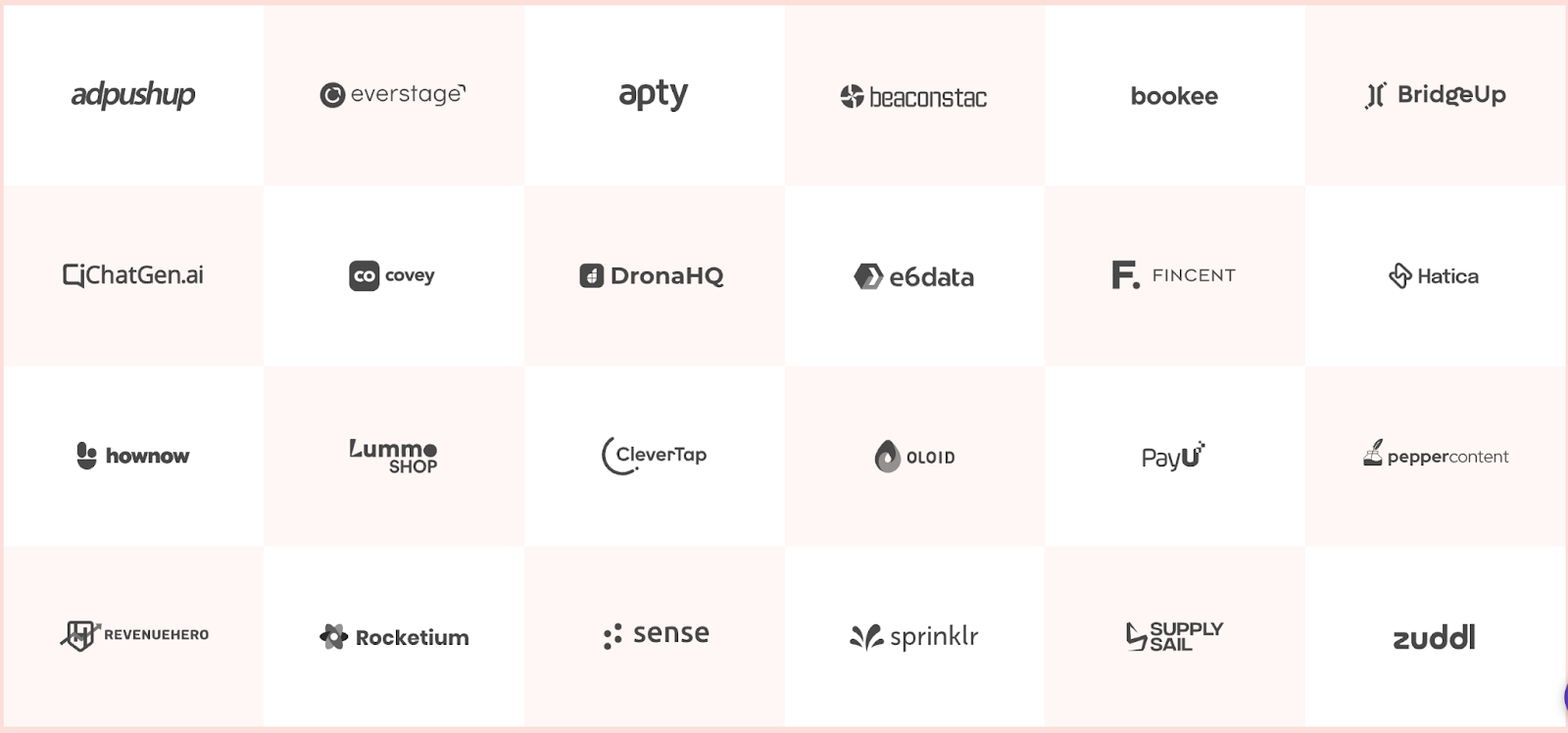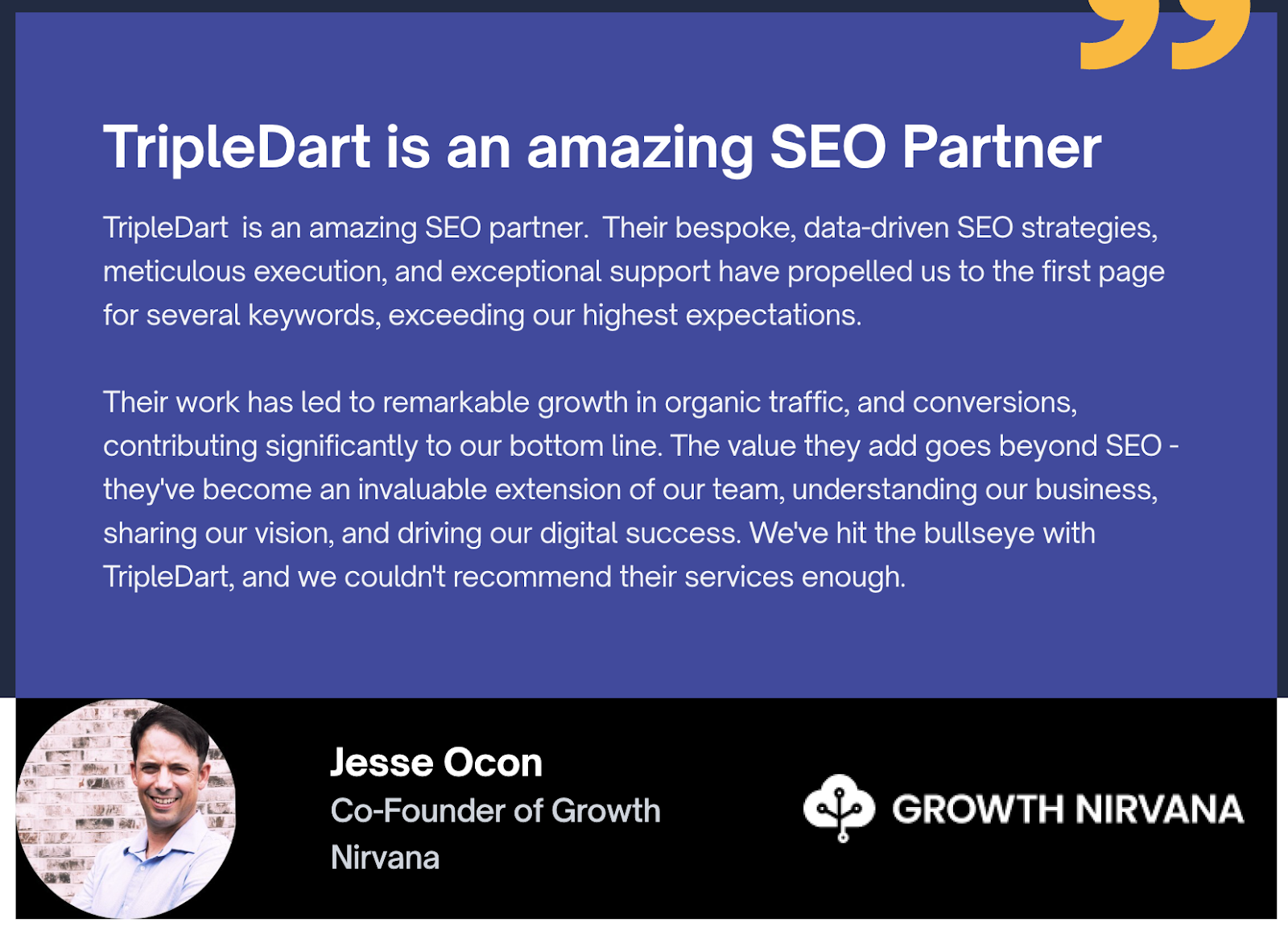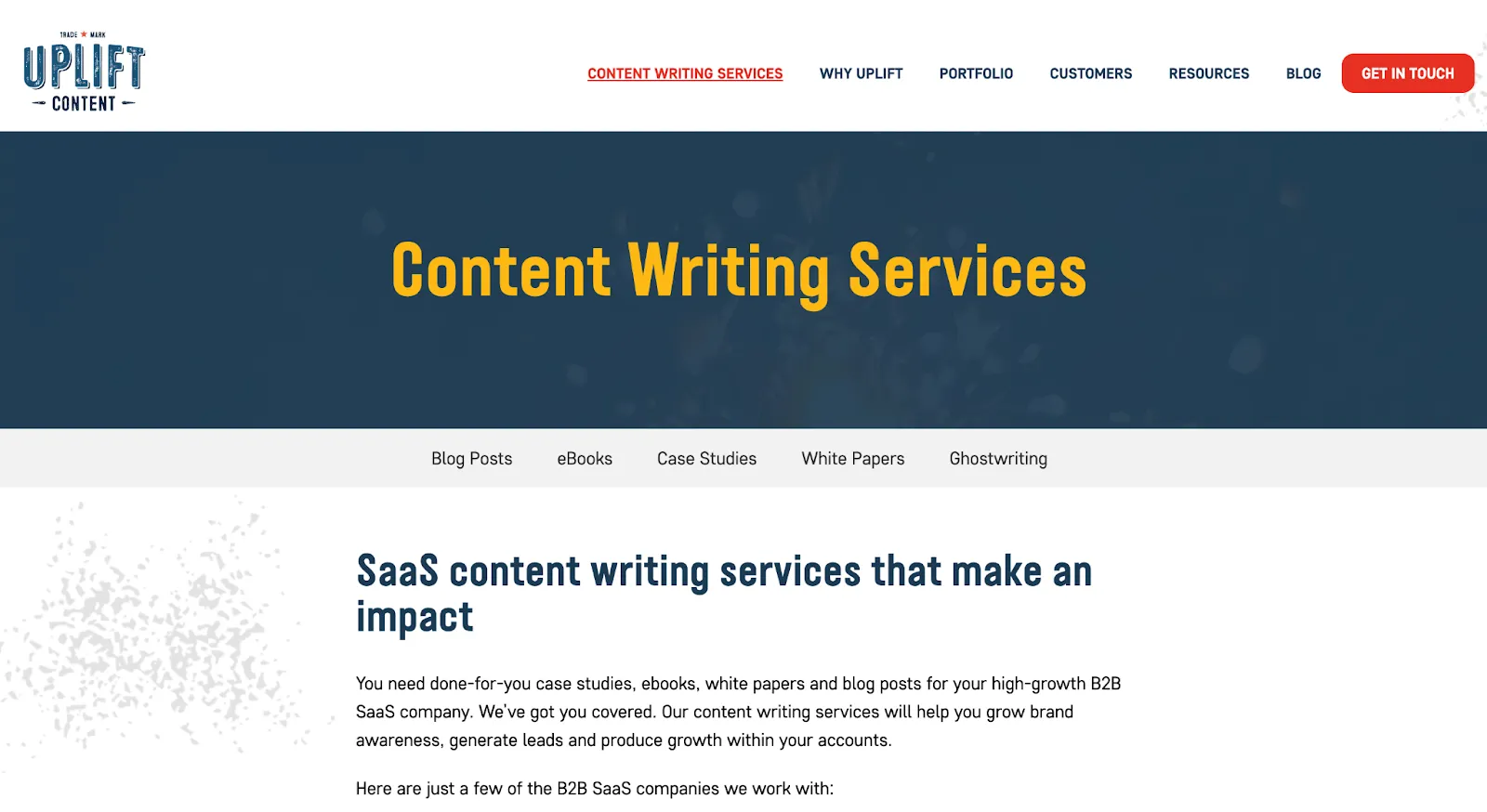Ever read a SaaS blog that starts with “In today’s ever-evolving digital world…”?
Yeah, same. You probably rolled your eyes and scrolled away.
SaaS buyers don’t have time for vague content. You’re selling technical products to decision-makers who want fast answers and clear value. Recent research from CMI shows that about 65% of marketers say content relevance and quality are the main reasons their marketing performs well.
The truth is that most content services aren’t built for SaaS. They don’t understand your product features, know the language of your sales teams, or can’t turn use cases into leads.
That is where specialized SaaS content writing services stand out. They combine writing, strategy, and domain knowledge to create content that drives the pipeline.
This article will help you find the right SaaS content marketing agency by showing you what to look for, how the best ones work, and the top 10 SaaS content service providers for 2025.
Curious how we evaluated these agencies? Check our review methodology.

In SaaS, weak content creates confusion, breaks trust, and slows growth. A specialized SaaS content writing firm understands your product, speaks your customers’ language, and supports pipeline goals. But how do you tell an expert provider from one that provides generic content?
SaaS buyers expect clarity. Generic content may miss key differentiators and miscommunicate value. Choose an agency that:
Your content must rank, educate, and convert. Look for teams that:
Your readers aren’t all the same. Some are technical (developers), and others are business decision-makers (CMOs, founders). Your content needs to be crisp, precise, and tailored for a busy audience. Check if the agency can:
Look for a service with a structured, transparent workflow. You should expect:
As your SaaS company grows, you’ll need a partner that scales with you. The agency should:

A strategic, repeatable content process separates high-performing SaaS content from generic blog posts. Your writing must align with SEO goals, sales objectives, and user intent.
Here's how top-tier SaaS content agencies ensure every piece delivers measurable results:
Ensure each topic has a clear conversion path that supports demos, signups, or feature adoption.
Use these SERP insights to shape content that meets intent and moves readers toward action.
Apply these interview insights to create content that demonstrates real product value and increases downstream conversions
Build each structure to guide readers toward the next step, whether that’s a CTA, trial, or product page
Use subtle prompts that guide readers from education to evaluation, strengthening BOFU conversion rates.
Editing ensures every piece is search-ready and conversion-aligned before it goes live
This comparison table outlines services, pricing models, and ideal fits to help you make an informed decision.
When you're comparing agencies, it helps to know exactly what each profile covers. In this section, each agency breakdown includes what they’re best for, core strengths, key services, notable clients, and pricing details.

At TripleDart, we work as a dedicated content partner for SaaS brands. Our team of strategists and writers creates content that aligns with your sales funnel, communicates your product’s value, and drives conversions. With a mix of SEO expertise and sharp storytelling, we help you turn content into a revenue channel.
We collaborate closely with product marketers and SEO strategists so each piece supports demos, signups, or feature adoption.
We operate as a global network of SaaS content specialists. Our core team is based in Texas, US, and Bangalore, India, and we work with expert writers, strategists, and SMEs across multiple regions to support SaaS brands worldwide.
We provide end-to-end SaaS content writing and strategy support. Our work covers:
We work with SaaS companies across product categories, helping them grow organic visibility, strengthen product narratives, and drive measurable conversions. Our clients range from early-stage SaaS teams to mid-market and enterprise brands.
Some of the companies we have partnered with include:

Our clients consistently share how our content strategy improves visibility, strengthens their pipeline, and accelerates growth across competitive SaaS markets.
Jess Ocon, Co-Founder of Growth Nirvana, noted that our work helped them rank on the first page for key terms, increase organic traffic, and generate conversions while feeling like we operated as an extension of their team.

TripleDart offers custom pricing based on volume, complexity, and scope. Packages are designed to scale with your strategy, whether you need ongoing retainer support or project-based engagement.
Our writers include former product marketers, technical writers, and SaaS content strategists who understand both your product and your market. We create accurate, high-converting content for every stage of the funnel. From technical API guides to investor-facing whitepapers, we write in your product’s language and in your customer’s language.

Uplift Content is a boutique agency that specializes in creating credibility-driven content for B2B SaaS companies. They’re best known for their in-depth case studies and long-form content designed to build trust with high-ticket decision-makers. Uplift is not ideal for brands looking for high-volume SEO blogs or ongoing campaign content.
Halifax, Canada
Starts at $400 for blog posts and $750+ for case studies. Uplift operates on a per-project basis rather than long-term retainers.

NoGood is a full-stack growth agency that treats content as part of a broader performance marketing engine. While they’re not exclusively a content shop, their strength lies in blending conversion-focused content with paid, SEO, and lifecycle strategies.
Great for VC-backed SaaS companies that need more than blog traffic and want end-to-end funnel thinking. Less ideal if you’re looking for deep technical explainers or product tutorials.
New York, USA
Custom pricing depending on the service mix and engagement scope. NoGood typically works with venture-backed or growth-stage SaaS companies on a monthly retainer, starting around $5,000/month.

Inturact is a SaaS marketing agency built around product-led growth (PLG). What sets them apart is their focus on aligning content with the product experience, like onboarding flows, feature education, and lifecycle campaigns.
Houston, Texas
Full-service growth engagements start at $10,500/month. Offers custom quotes based on business goals, funnel complexity, and content volume.

SimpleTiger combines lean SEO strategy with streamlined content execution. They're ideal for SaaS startups and mid-sized companies looking to rank faster without a bloated process. Their strength lies in simplicity; they prioritize keyword research, write SEO-friendly content, and avoid overcomplicating things. If you're looking for a highly strategic brand voice or deep product explainers, they may not go as deep as others. But if SEO visibility is your top priority, they’re a solid bet.
Sarasota, Florida
Custom pricing

Stellar Content is the go-to partner for dependable, technically sound content delivered on time, every time. They aren’t big on brand storytelling or thought leadership. Their strength is consistency. For startups or busy teams that want minimal hand-holding, they’re a low-maintenance, high-reliability pick.
Fully remote (global team)
Marketplace pricing ranges from 3.5¢ to 15.9¢ per word, depending on writer tier.
Managed Services use custom pricing based on volume and support level.

Beam Content specializes in demand-generating content for early-stage B2B SaaS brands. What sets them apart is their “content-as-a-service” model, which combines fast execution with embedded strategy. Instead of just producing content, Beam focuses on building topic authority, capturing intent, and delivering compounding value through consistent publishing.
Remote-first, headquartered in the US
Clients typically spend $10k–$12k per month, with $5k/month project minimum.

Labs Media is ideal for SaaS companies that care about ranking for tough keywords and backing every post with research. Their strength lies in keyword strategy and link building, not flashy content design or clever hooks. If your top priority is SEO visibility, they’ll get you there with structured, data-driven content. That said, their copy might need a bit more polish if you’re targeting brand-led growth or want a more human tone.
Best for growth-stage companies that value performance over personality.
Remote-first (Europe-based team)
Blog posts start at $300–$700/post. Offers monthly retainers and one-off project options.

Growfusely sits at the intersection of SEO and storytelling. Their content feels crafted, and they’re particularly good at building topical authority through clusters and comparison content, making them a smart pick for mid-sized SaaS companies looking to move upmarket.
Ahmedabad, India
Packages reportedly start at $2,000/month. Custom retainers are available at varying prices based on monthly output.

Preceptist is a nimble content partner built for speed and precision. They’re a smart pick for early-stage SaaS startups that need content fast, without the overhead of big agency retainers. What stands out is their ability to adapt; whether you need technical content, SEO blogs, or landing page copy, they deliver quickly and with surprising clarity. However, they may not be ideal if you're looking for deep strategic support or large-scale volume.
India (remote team)
They have three pricing tiers:

Most SaaS companies miss the mark because their content strategy focuses on traffic, not conversions. The approach is built on shortcuts like generic topics, vague intros, and zero connection to your actual product.
Here are the most common problems we’ve observed in the content of many SaaS companies:
Everyone’s writing TOFU content. “What is X?” and “Why do you need Y” blog posts.
When your content strategy is 90% awareness and 0% product, you’ll attract researchers, students, and bots, but not buyers.
So while interviewing the shortlisted SaaS content writing service providers, ask, "How do you balance awareness content with mid and bottom-funnel pieces that actually drive signups or demos?”
Too many blog posts follow the same formula: intro, three H2s, conclusion, done. This formula might check SEO boxes, but it doesn’t reflect how your audience thinks or buys.
SaaS buyers want content that helps them compare tools, solve real problems, or justify a decision to their boss. Templates can’t do that. You need content shaped by the user journey, and reflect your unique point of view, not just rehash what’s already out there.
It’s funny how many intros still start with “In today’s fast-paced digital world, businesses are constantly looking for ways to optimize their operations.”
These intros say nothing. They stall the reader, and sound like every other SaaS blog on the internet. SaaS buyers are often product-savvy and time-strapped. If you don't hook them with something specific, insightful, or relatable from the start, they’ll bounce.
So ask your SaaS content agency: “How do you write intros that grab attention and set up the problem we solve?”
This is THE biggest miss. Many content teams are scared to mention their product, thinking it’ll turn the piece into a sales pitch. But if someone’s reading a blog on “how to automate onboarding,” and your tool does exactly that, why wouldn’t you mention it?
SaaS content is about helping readers solve a problem, and your product is part of that solution. Smart content weaves your product naturally into the narrative, through examples, screenshots, case studies, or even subtle CTAs, without sounding salesy.
They experiment with different blog types to drive action, like demos, signups, free trials, or qualified leads.
Here are the four blog types that consistently deliver results for SaaS companies:
Different blog types don’t serve the same purpose, so each one should be tied to a specific KPI.
How-to guides help with assisted conversions, since readers often move toward trial signups or start using a feature.
Long-form posts help with authority metrics, earning backlinks and ranking for broader keywords.
Comparison posts influence demo requests and other BOFU actions.
Case studies support your sales team by improving win rates and helping deals move faster.
When you map each content type to a clear KPI, it becomes easier to see which pieces contribute to real pipeline impact.
SaaS buyers are sharp, skeptical, and short on time. Your content needs to guide, convince, and convert, which can only happen if it speaks directly to your prospective buyers in their language without losing the plot.
At TripleDart, we bring that level of understanding. Our team includes SaaS strategists, product-focused writers, and SEO specialists who work closely with you to create content that supports your growth goals and strengthens your overall content engine.
We also support AI-driven content needs, including optimizing for AI Overviews, structuring content for LLM visibility, and using AI research tools to strengthen accuracy, depth, and topical authority. Everything we produce is built to work across both search engines and AI-powered discovery.
We focus on what moves the needle: pipeline impact, positioning that sticks, and assets that support your sales team.
If you're ready to work with a team that gets your product, respects your brand, and delivers with clarity, reach out to TripleDart’s SaaS content team.
SaaS content writing services vary widely based on agency reputation, deliverables, and niche specialization. Typically, the pricing is structured as:
Custom projects (like white papers or case studies) often cost more.
Most SaaS content packages include:
Higher-tier packages often include content audits, strategy calls, and performance reviews.
SaaS content is more technical, funnel-driven, and conversion-focused.
Strong SaaS agencies nail tone through:
It depends on your goals:
Join 70+ successful B2B SaaS companies on the path to achieving T2D3 with our SaaS marketing services.

































